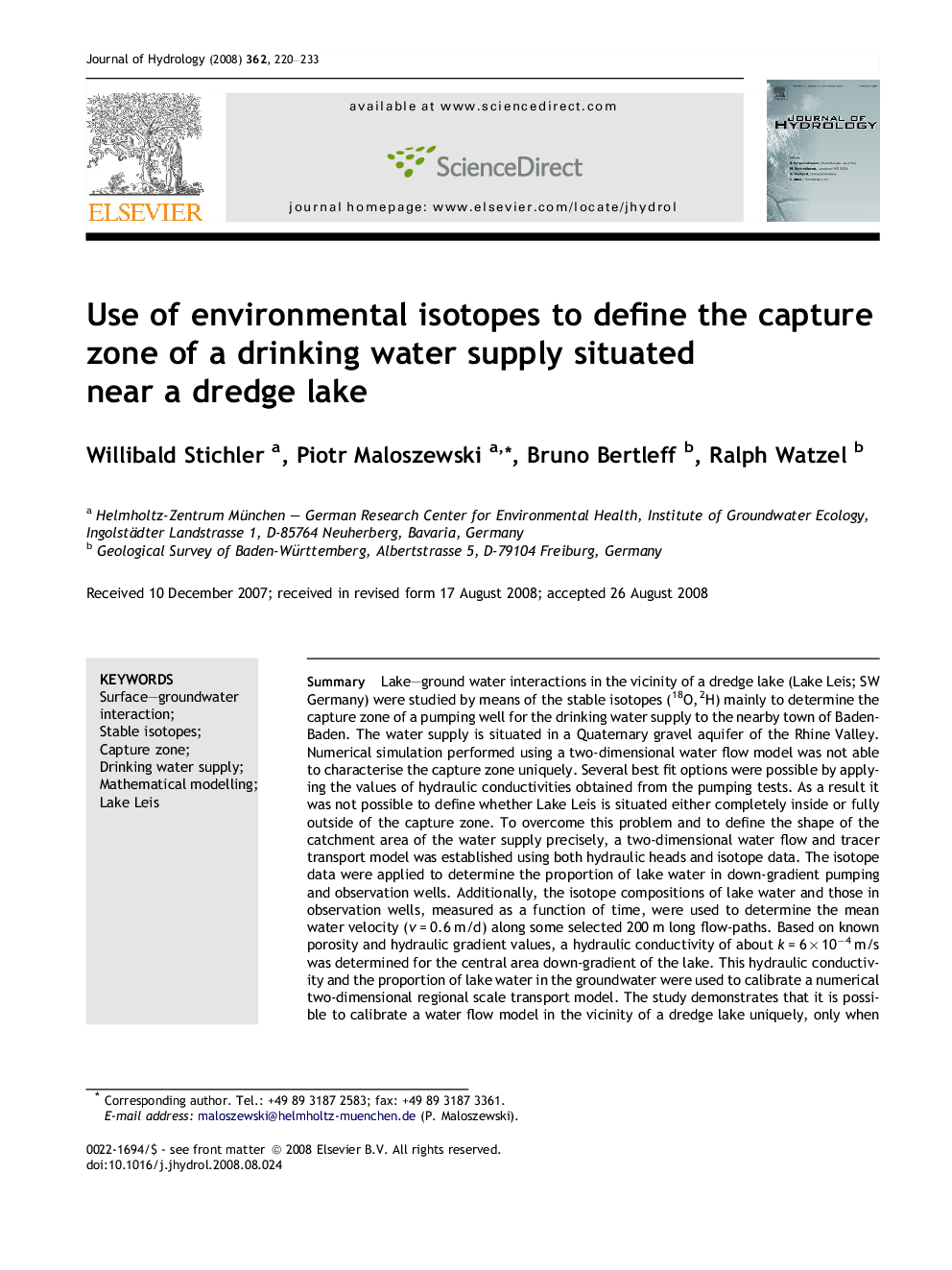| Article ID | Journal | Published Year | Pages | File Type |
|---|---|---|---|---|
| 4579160 | Journal of Hydrology | 2008 | 14 Pages |
SummaryLake–ground water interactions in the vicinity of a dredge lake (Lake Leis; SW Germany) were studied by means of the stable isotopes (18O, 2H) mainly to determine the capture zone of a pumping well for the drinking water supply to the nearby town of Baden-Baden. The water supply is situated in a Quaternary gravel aquifer of the Rhine Valley. Numerical simulation performed using a two-dimensional water flow model was not able to characterise the capture zone uniquely. Several best fit options were possible by applying the values of hydraulic conductivities obtained from the pumping tests. As a result it was not possible to define whether Lake Leis is situated either completely inside or fully outside of the capture zone. To overcome this problem and to define the shape of the catchment area of the water supply precisely, a two-dimensional water flow and tracer transport model was established using both hydraulic heads and isotope data. The isotope data were applied to determine the proportion of lake water in down-gradient pumping and observation wells. Additionally, the isotope compositions of lake water and those in observation wells, measured as a function of time, were used to determine the mean water velocity (v = 0.6 m/d) along some selected 200 m long flow-paths. Based on known porosity and hydraulic gradient values, a hydraulic conductivity of about k = 6 × 10−4 m/s was determined for the central area down-gradient of the lake. This hydraulic conductivity and the proportion of lake water in the groundwater were used to calibrate a numerical two-dimensional regional scale transport model. The study demonstrates that it is possible to calibrate a water flow model in the vicinity of a dredge lake uniquely, only when stable isotope signals measured in a time series in both the lake and groundwater are taken into consideration. The calibrated model finally enables the capture zone of the production well to be precisely defined.
